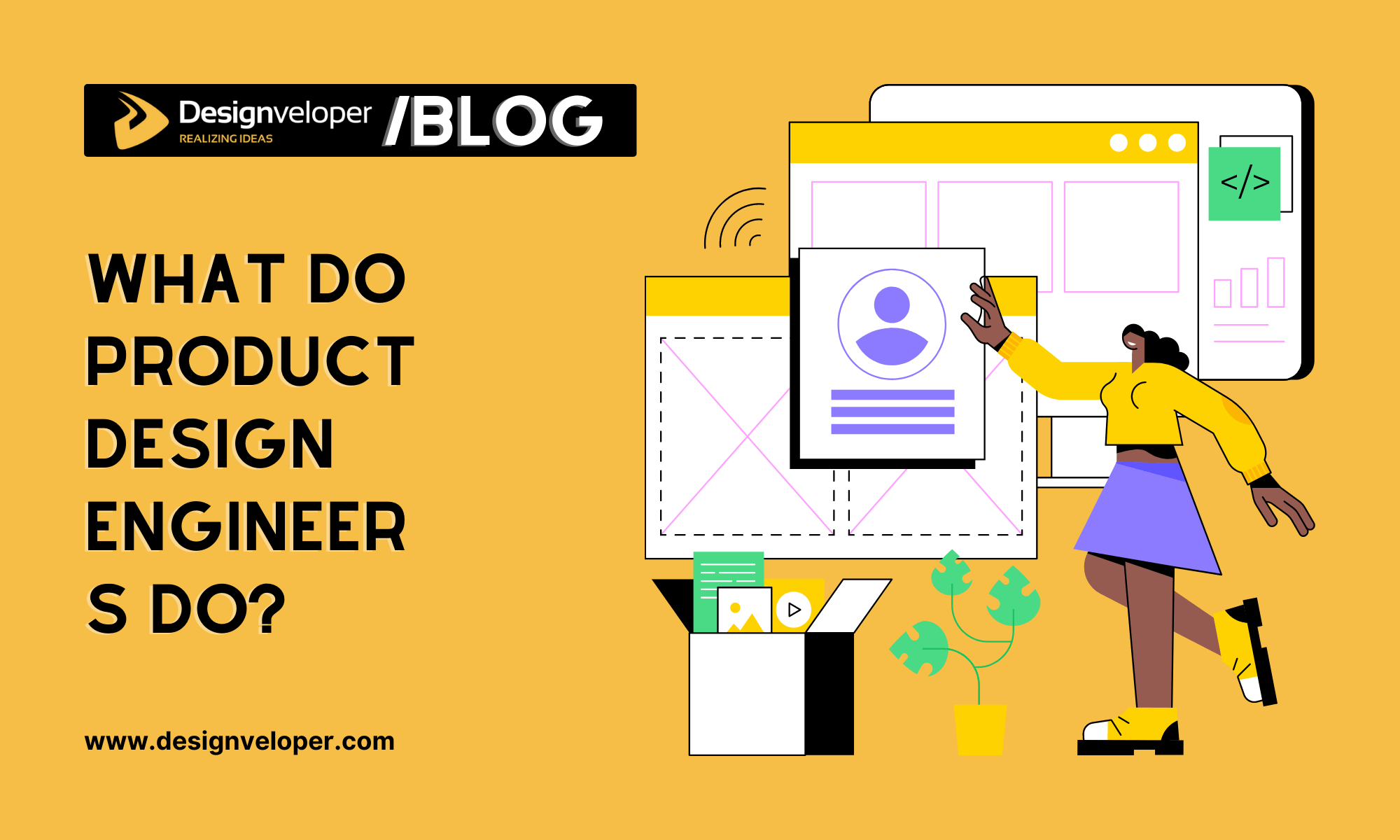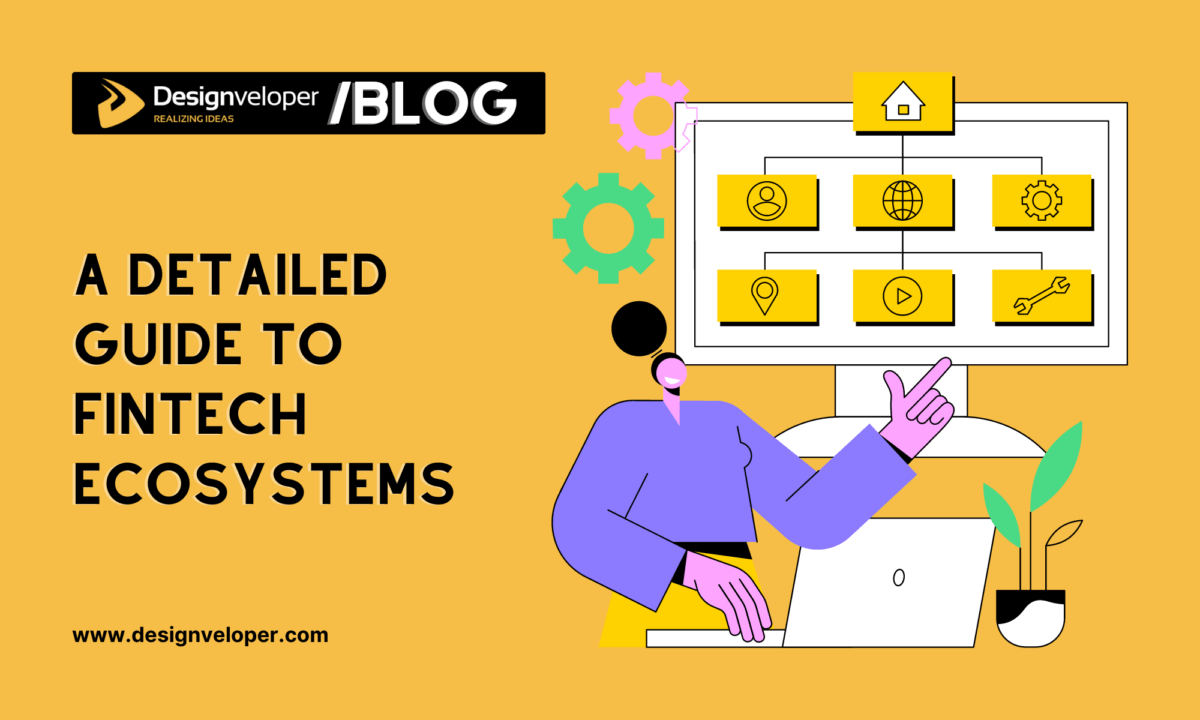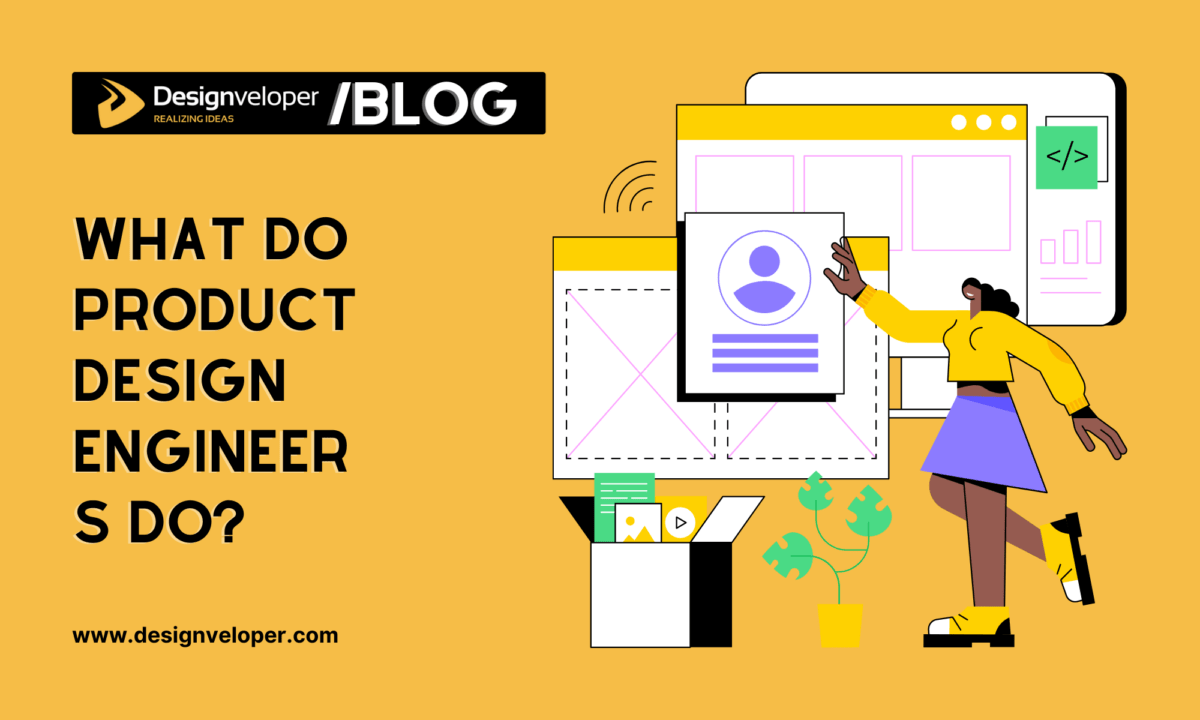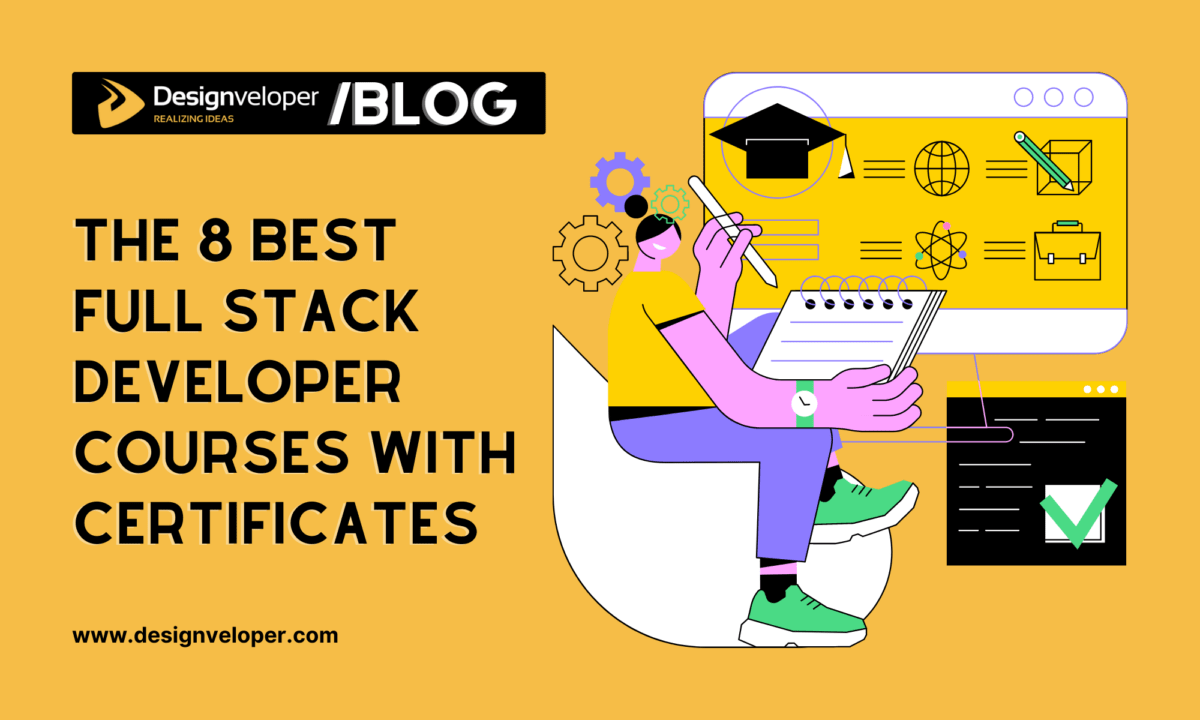Regardless of size, all consumer products you use every day are intellectual ideas of product designers. In this article, you’ll learn about what a product design engineer exactly does and what he/she contributes to product design and development.
What Is a Product Design Engineer?
A product design engineer is one who builds, tests, and advances product designs for assorted customer products through manufacturing cycles. To support the seamless execution of those jobs, an engineer needs to use lots of technological software and tools like computer-aided design (CAD), Autodesk Product Design Suite, or a 3D printing machine.
Product designs are handled by either product design engineers or industrial designers. Therefore, the two concepts can be interchangeably used to refer to those involved in the creation and development of products. But the latter can primarily work on physical products, while the former can extend to digital products (e.g. SaaS or interactive products).
Apart from creativity-related factors, their designs need to comply with the industry norms and specifications of products. Beyond that, their ideas must satisfy the demands of end-users. Thereby, they can either improve products and their usability or work on new projects.
The Role of Product Design Engineers in the Development Process
The involvement of product design engineers is prevailing in five main phases of the development process. Those stages include defining problems, ideating designs, developing prototypes, and developing and testing finished products.
1. Defining problems
Before commencing any product design, product design engineers must diagnose a company’s problems by tracking down product design requirements. In particular, they need to thoroughly analyze a product’s usage, customer segmentation, functionality, and so forth.
2. Ideating designs
Based on what designers have found out about a company’s existing problems and business objectives, product design engineers will generate ideas for a new or existing product by roughing out concepts, designs, and visual themes.
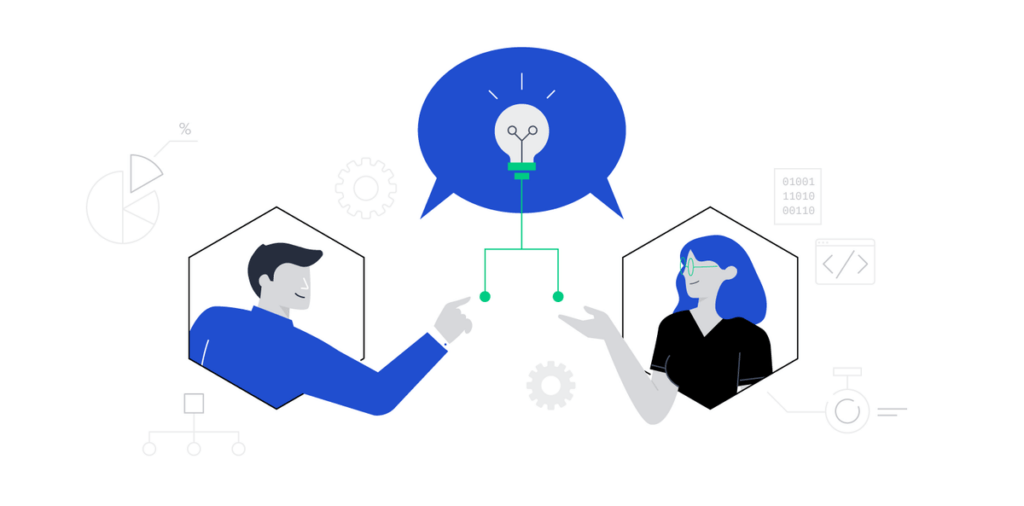
3. Developing prototypes
Prototypes are the early models and samples of a product built to test how a design or concept works. This phase is sometimes called ‘materialization’, taking place between the blueprint and formalization of ideas. With the necessary tools and software, the given hand drawings will be turned into working models.
4. Developing finished products
Once prototypes meet business and design requirements, there will be approval for manufacturing. This time, product design engineers are also held accountable for choosing proper materials and proposing manufacturing requirements for a product. Importantly, the product’s specifications must be aligned with industry standards in terms of safety and functionality.
Some duties of engineers during this phase entail:
- Interacting and dealing with raw material suppliers;
- Proposing manufacturing processes;
- Developing supply chains;
- Contacting operation teams;
- Determining manufacturing costs and even finding ways to mitigate production expenses.
5. Test finished products and give feedback
Shortly after end-user products have been completed, they will be evaluated in terms of safety, functionality, durability, and visual appeal. Essential tests are undertaken to check those metrics and accordingly, product design engineers can make changes if any. Feedback and reviews from end-users are also considered in this final stage.
Recommended reading: UI vs UX Design: Definition and Why This Comparison Should Not Exist?
How to Become a Product Design Engineer
To become a product design engineer, you need to focus on relevant credentials and hands-on experience. Here is a simplified approach for a competitive foundation.
1. Skillsets: From Academic Degree to Additional Courses
Product design engineers typically obtain a bachelor’s degree in fields such as product design, manufacturing engineering, or mechanical engineering. This foundational education equips you with essential theoretical knowledge and technical skills necessary for the role.
In the mean time, start building your portfolio at school. This can include volunteering projects, freelance projects or internships. A strong portfolio can land you a spot for entry-level positions.
Don’t miss out on bootcamps and specialized courses to enrich your design toolbox and develop relevant skills. A product design engineer needs a deep understanding of the company’s products, customer needs, and production costs. Proficiency in using computer-aided design (CAD) software is crucial for creating, testing, and enhancing product designs. Your strength in user experience design or manufacturing engineering will stand out even more to potential employers.
2. Optional Industry Certifications
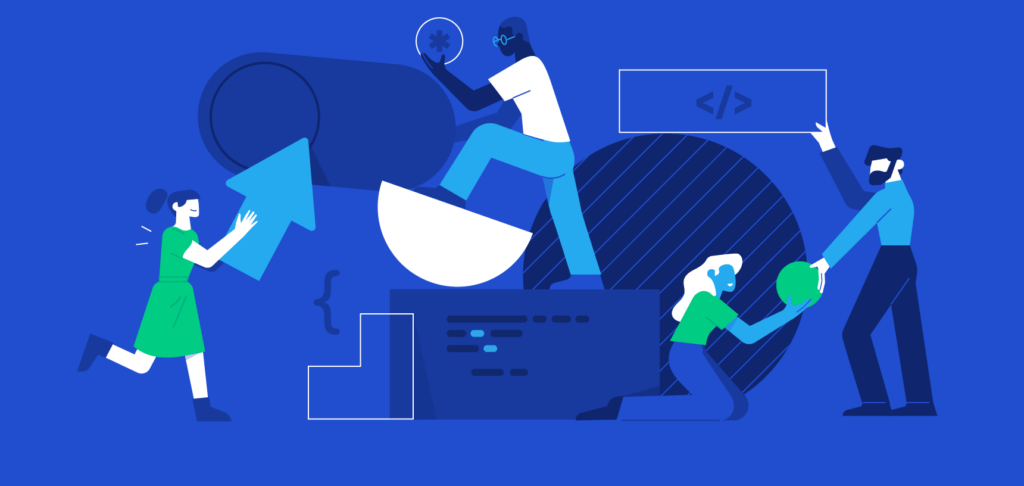
While not mandatory, obtaining industry certifications can showcase a commitment to the field and mastery of specific skills. These certifications can be advantageous for career advancement and standing out in the competitive job market. Here are a few of useful ones:
- Certified Professional in Product Design (CPPD): Administered by the American Society for Quality (ASQ), CPPD recognizes individuals achieving a high level of expertise in product design.
- Certified Product Design Engineer (CPDE): Validating technical knowledge, skills, and experience, CPDE certification by the American Society of Mechanical Engineers (ASME) is a mark of excellence in the field of product design.
- Autodesk Inventor Certified Professional (AICP): For those showcasing expertise in Autodesk Inventor software, AICP certification is a testament to their skills.
3. Gain Practical Experience
Beside 4-6 years of experience, most product design engineer positions require an average of 1-2 years of job training. Practical experience is a non-negotiable while building your application for this position.
Look for internships, training programs, or entry-level positions in related fields even when in school. This hands-on exposure not only allows aspiring product design engineers to convert theoretical knowledge and learn industry standards but also develop soft skills such as creativity and listening skills.
4. Apply for Product Design Engineer Positions
After acquiring the necessary education and experience, individuals can start applying for product design engineer positions. Tailoring their resumes to highlight relevant skills and experiences significantly increases the likelihood of securing a job.
In summary, the path to becoming a product design engineer involves earning a relevant bachelor’s degree, developing essential skills, gaining practical experience, considering optional industry certifications, and strategically applying for positions to kickstart a successful career in product design engineering.
FURTHER READING: |
1. Top 7 Essential UI Design Principles for Newbies |
2. 3 Essential UI Mistakes That You Should Avoid |
3. What Is UI? The Overview for Beginners |
Responsibilities of Product Design Engineers
To create the best products for clients, a product design engineer has to be liable for multiple tasks and go with a whole development team throughout the development process. Looking through job sites for this position, you can easily figure out which professional responsibilities an engineer must take. Product design engineers can work for their own companies or outside clients in full-time, part-time, or freelance positions:
- Draw up design criteria involving concepts, themes, performance, and manufacturing;
- Propose initial design ideas based on a company or client’s requirements and budgets;
- Make presentations to clients or senior design managers, even when presenting design proposals or tendering for contracts;
- Formulate design concepts, detailed sketches, and design specifications (e.g. a list of a product’s parts and costs) using such software as CAD;
- Build working models or samples manually or with the support of computerized prototyping machines to test design concepts;
- Search for the raw materials for a product in terms of their availability or appropriation;
- Research thoroughly on manufacturing processes and industry requirements;
- Engage in periodical meetings with other engineers and other development teams (e.g. marketing) to discuss suitable manufacturing procedures, expenses, and commercial issues;
- Inspect a client or company’s manufacturing facilities to assess whether production is feasible and guarantee a seamless process;
- Track the feedback and reactions of final customers;
- Carry out managerial duties such as recruiting, training, and administering staff.
So, to successfully develop cost-effective and good-quality designs, product design engineers must grasp end-user demands, a company’s products, market standards, and production costs.
5 Skills a Product Design Engineer Needs
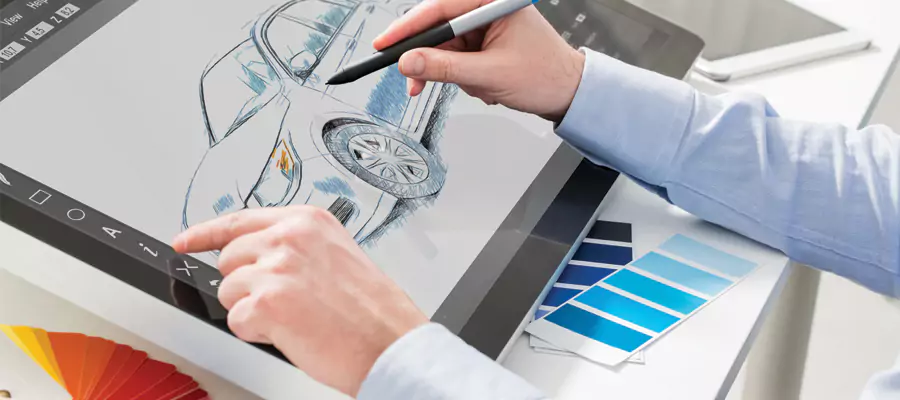
To execute their responsibilities, the product design engineer often master a diverse set of skills essential for securing competitive salaries.
1. Technical Skills
Technical skills are a must for any product design engineer. They form the foundation of their work, enabling them to turn ideas into tangible products. One of the most important technical skills is proficiency in Computer-Aided Design (CAD) software. This software allows engineers to create detailed 3D models of their designs.
Material knowledge is another crucial technical skill. A product design engineer needs to understand the properties of various materials. This knowledge helps them select the right materials for each product, balancing factors like cost, durability, and aesthetics.
Prototyping is a further technical skill that is essential. It involves creating a physical or digital model of the product. Prototyping allows the engineer to test the product’s functionality and make necessary adjustments before the final production.
2. Problem-Solving Skills
Problem-solving skills are essential for a product design engineer. They often encounter challenges that require innovative solutions. Whether it’s a design issue, a material constraint, or a production problem, a product design engineer needs to find effective solutions.
These skills involve critical thinking and analytical abilities. Engineers need to analyze the problem, identify potential solutions, and evaluate their effectiveness. This process often involves a good understanding of design principles, material properties, and manufacturing processes.
Moreover, problem-solving skills are not just about finding solutions. They also involve implementing these solutions and monitoring their effectiveness. If a solution doesn’t work as expected, the engineer needs to identify the reasons and find alternative solutions.
3. Communication Skills
Communication skills are vital for a product design engineer. They facilitate effective collaboration with team members, stakeholders, and clients. Clear communication ensures everyone understands the design goals and the steps needed to achieve them.
A product design engineer often needs to explain complex technical concepts in simple terms. This ability helps non-technical team members or clients understand the design process. It also aids in setting realistic expectations and preventing misunderstandings.
Moreover, good listening skills are part of effective communication. A product design engineer must understand client needs, feedback from team members, and user responses to prototypes. This understanding informs design decisions and contributes to the creation of successful products.
4. Creativity
Creativity is a crucial skill for a product design engineer. It fuels innovation, leading to unique and effective product designs. A creative engineer can think outside the box, coming up with novel solutions to complex problems.
This creativity isn’t just about having original ideas. It’s also about applying these ideas in practical ways. Thos who use creativity to design products that are not only innovative but also functional and user-friendly.
Moreover, creativity plays a role in problem-solving. It allows the engineer to approach challenges from different angles, often leading to more effective solutions.
5. Project Management Skills
Project management skills are crucial for a product design engineer. They oversee the entire lifecycle of a product, from initial concept to final production. This involves planning, coordinating resources, setting deadlines, and monitoring progress.
Those with strong project management skills can ensure projects stay on track. They can anticipate potential challenges and devise strategies to address them. This proactive approach helps prevent delays and keeps the project within budget.
Moreover, project management skills involve effective team coordination. A product design engineer needs to collaborate with various teams, including design, production, and marketing. Good coordination ensures everyone is aligned towards the same goal.
FURTHER READING: |
1. UX Design Process: What You Need To Know? |
2. What Does a UX Designer Do to Make the Best Product? |
3. UX Design Careers: What You Need to Focus On? |
Typical Work Day for Product Design Engineers
No engineers must perform all of such responsibilities within a day because those jobs are spread out over the development cycle of a product, even when it’s released to the public for use. Therefore, no working days of a product design engineer are identical.
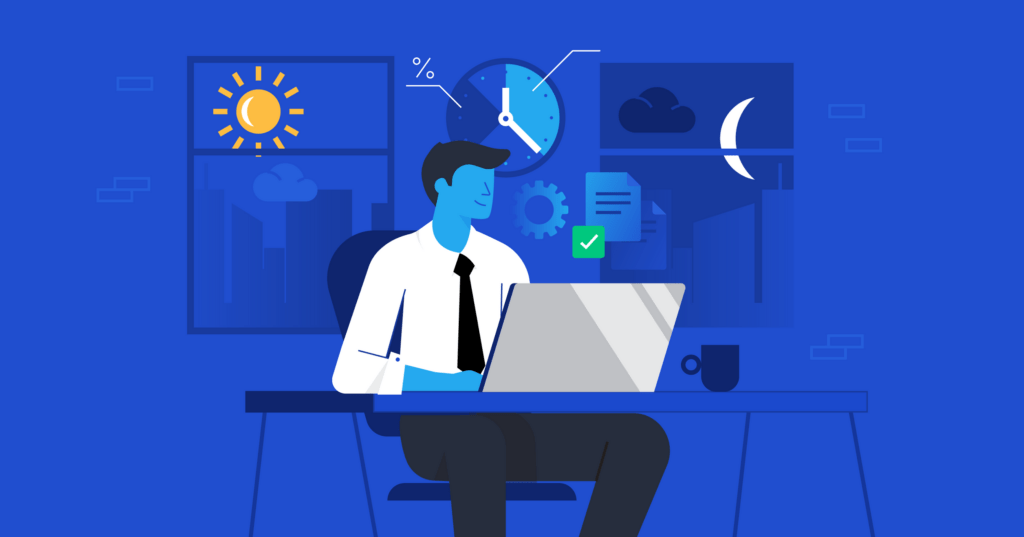
Depending on workspaces and projects, an engineer’s daily work can vary. Inevitably, a successful product is not only dependent on a single engineer, but rather the effective cooperation of multidisciplinary employees. Therefore, most of a design engineer’s jobs are associated with meetings.
Right at the beginning of the development process, product design engineers have to come up with new ideas based on a client’s or company’s demands. It requires them to conduct end-user research to detect current industry trends and the outstanding features of a competitor’s products. However, to ensure such ideas are in alignment with market requirements, research feedback sessions are held.
Other meetings such as product working sessions or design working sessions regularly take place to discuss essential questions, problems, priorities, and scenarios. In those meetings, a design engineer may work with other product designers, other departments, and even external companies. Accordingly, meeting agendas often entail:
- Working on visions;
- Building up strategies;
- Receiving feedback on the implementation of a design;
- Compare designs with product requirements;
- Implement Q&A work to track the progress and more.
Recommended reading: What is The Quality Assurance Process?
A Product Designer’s Creative Process
Product design engineers play a pivotal role in innovation, with 82% of respondents in Forrester Consulting emphasizing that creative companies gain more business advantages. The creative process in engineering design follows five crucial steps, beginning with preparation and ending in implementation.
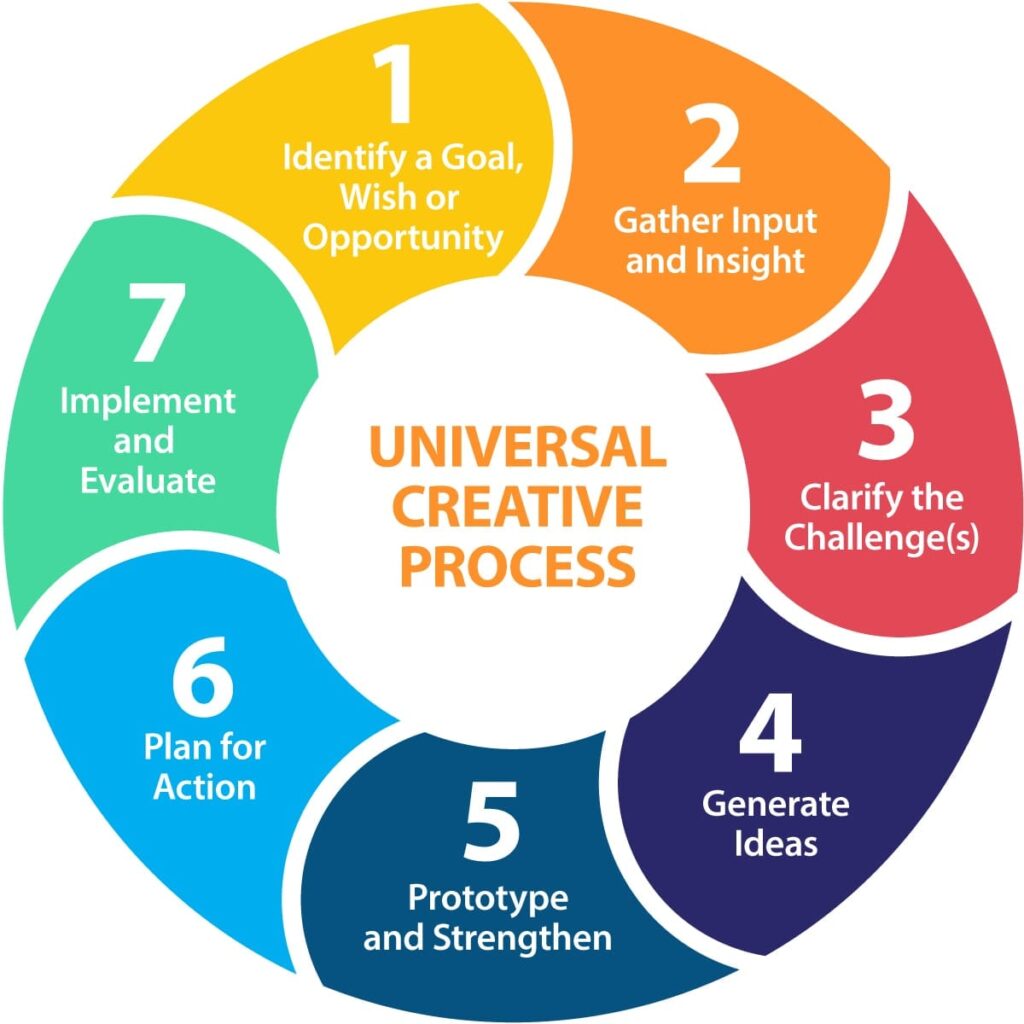
- Preparation: In this stage, product design engineers can collect information, undertake research, use their past experience, and more to prepare for the generation of ideas.
- Incubation: This phase involves carefully using gathered materials, examining concepts in different aspects, and experimenting with how they suit together.
- Illumination: In this insight stage, all concepts will be pieced together to build up an idea.
- Evaluation: Coming to this step, product design engineers will reassess how the idea is feasible and outperform other alternative solutions. Some professionals may conduct market research to test the idea’s validity.
- Implementation: Once the design has been finalized, it’s time for engineers and other departments to start the design process and bring the idea to life.
Conclusion
Product design engineering is a combination of creative and technical features. No matter how this job has evolved, it’s still an integral part of the development process of products. If you plan to pursue this job in the future, you should understand what a product design engineer does and which essential skills you need in this career path.
